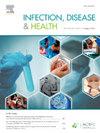零射击大语言模型在手术部位感染审计中的应用。
IF 2
Q2 PUBLIC, ENVIRONMENTAL & OCCUPATIONAL HEALTH
引用次数: 0
摘要
人工智能,特别是大型语言模型(LLM),可能能够协助监测手术部位感染(SSI)。方法:本回顾性研究采用Llama 3.0 700亿参数模型对两家城市医院4个月的SSI患者进行SSI识别。随机选取对照患者作为对照。临床住院和门诊进展记录分别提供给LLM,并分类为是否指示SSI。然后对这些分类进行分析,以确定二进制性能特征并确定阳性病例分类的时间。结果:本组共28例,病例(SSI)组14例,对照组14例。SSI病例的手术包括剖宫产(12/14,85.7%)和关节置换术(2/14,14.2%)。LLM在患者水平上的总体准确率为26/28(93%)。敏感性为100%,特异性为86%。在记录水平上,对于每个病例LLM标记的第一个记录,13/14(92.3%)与感染控制临床医生确定的感染发病日期相同或之前。结论:利用LLM对SSI病历进行筛选是可行的。进一步的研究可能会寻求评估LLM作为临床工作流程的一部分时的结果。本文章由计算机程序翻译,如有差异,请以英文原文为准。
Zero-shot large language model application for surgical site infection auditing
Introduction
Artificial intelligence, in particular large language models (LLM), may be able to assist with monitoring for surgical site infections (SSI).
Method
This retrospective study involved the application of the Llama 3.0 70-billion parameter model to the identification of SSI in a group of all SSI in two metropolitan hospitals from a 4-month period. Randomly selected control patients were chosen as comparators. Clinical inpatient and outpatient progress notes were provided to the LLM individually and classified as indicating an SSI or not. These classifications were then analysed to determine binary performance characteristics and to determine the timing of positive case classification.
Results
There was a total of 28 cases in the study, 14 in the case (SSI) group and 14 in the control group. The operations involved in the SSI cases were caesarean section (12/14, 85.7 %) and arthroplasty (2/14, 14.2 %). The LLM had an overall accuracy at the patient-level of 26/28 (93 %). There was a sensitivity of 100 % and specificity of 86%. At the note-level, for the first note flagged by the LLM for each case, 13/14 (92.3 %) were on the same day as, or before, the date noted as the onset of infection as identified by infection control clinicians.
Conclusions
The use of LLM for the screening of medical notes for SSI is feasible. Further studies may seek to evaluate the outcomes of LLM when deployed as part of a clinical workflow.
求助全文
通过发布文献求助,成功后即可免费获取论文全文。
去求助
来源期刊

Infection Disease & Health
PUBLIC, ENVIRONMENTAL & OCCUPATIONAL HEALTH-
CiteScore
5.70
自引率
5.70%
发文量
40
审稿时长
20 days
期刊介绍:
The journal aims to be a platform for the publication and dissemination of knowledge in the area of infection and disease causing infection in humans. The journal is quarterly and publishes research, reviews, concise communications, commentary and other articles concerned with infection and disease affecting the health of an individual, organisation or population. The original and important articles in the journal investigate, report or discuss infection prevention and control; clinical, social, epidemiological or public health aspects of infectious disease; policy and planning for the control of infections; zoonoses; and vaccination related to disease in human health. Infection, Disease & Health provides a platform for the publication and dissemination of original knowledge at the nexus of the areas infection, Disease and health in a One Health context. One Health recognizes that the health of people is connected to the health of animals and the environment. One Health encourages and advances the collaborative efforts of multiple disciplines-working locally, nationally, and globally-to achieve the best health for people, animals, and our environment. This approach is fundamental because 6 out of every 10 infectious diseases in humans are zoonotic, or spread from animals. We would be expected to report or discuss infection prevention and control; clinical, social, epidemiological or public health aspects of infectious disease; policy and planning for the control of infections; zoonosis; and vaccination related to disease in human health. The Journal seeks to bring together knowledge from all specialties involved in infection research and clinical practice, and present the best work in this ever-changing field. The audience of the journal includes researchers, clinicians, health workers and public policy professionals concerned with infection, disease and health.
 求助内容:
求助内容: 应助结果提醒方式:
应助结果提醒方式:


